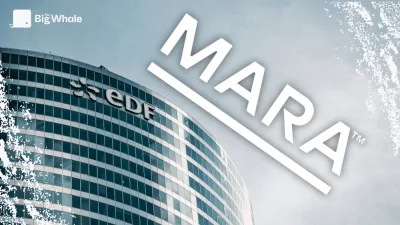TBW - HyperEVM: a network under construction backed by an on-chain trading giant

What you need to know
Launched in February 2025, HyperEVM is a general-purpose blockchain that operates independently of the Hyperliquid trading platform. The two projects are nonetheless linked: the stated ambition is to gradually bring the two layers together to build a coherent ecosystem, centred on decentralised finance.
Still young, HyperEVM is still in its infancy. Its infrastructure is functional, but its uses remain limited and its ecosystem under construction. However, a number of projects are exploring the possibility of setting up there, attracted by Hyperliquid's dynamism and the opportunity to occupy an area where there is as yet little competition. The idea is to make HyperEVM a natural extension of the trading platform, with DeFi products complementing the services already offered to users.
>> Crypto derivatives: facing regulation, what solutions for traders?
HyperEVM: the extension of Hyperliquid
Hyperliquid has established itself as one of the flagship protocols for on-chain trading in 2024. Its promise: to offer a fluid user experience with volumes close to those of centralised platforms. It has been a success, but the project is not unanimously supported.
The management team concentrates a great deal of power, fuelling criticism of its governance. Conversely, the community, strengthened by a massive airdrop of the HYPE token (valued at over $3 billion at TGE, over $13 billion today), remains highly mobilised.
At the heart of Hyperliquid's technical architecture is HyperCore, a blockchain custom-developed for the needs of decentralised trading. It prioritises maker orders in the transaction queue in order to favour market makers and reduce spreads. This specialisation makes the blockchain efficient for its main use, but limits its openness to external applications.
That's where HyperEVM comes in. Designed as a general-purpose blockchain, it allows any developer to deploy smart contracts while remaining tightly interoperable with HyperCore. The aim is clear: to complement Hyperliquid's offering by paving the way for other DeFi bricks such as loans, MAs or complex derivatives, which are absent from the main platform.
The two blockchains share the same governance token, the HYPE. After an initial airdrop that distributed 31% of the offering, a large proportion of the tokens (38.9%) remain available for future distribution. Many users are now counting on active participation in HyperEVM to hope to benefit.
>> Attend The Big Whale's derivatives breakfast (September 18 in Paris)
Functioning: an architecture designed for interoperability
HyperEVM is based on the same validation infrastructure as Hyperliquid, with a fixed group of 21 validators responsible for producing the blocks. The HYPE token plays a central role: it is used to pay transaction fees on the blockchain.
Like Ethereum, HyperEVM adopts the EIP-1559 mechanism, which results in the destruction of base fees. A notable feature is that priority fees are also burnt, meaning that the entire fee is removed from circulation. The aim of this mechanism is to exert deflationary pressure on the token.
As its name suggests, HyperEVM is compatible with the Ethereum Virtual Machine, allowing developers to deploy applications designed for other EVM blockchains without difficulty. This compatibility considerably widens the field of possibilities, making it easier to bring existing projects onto a new environment.
From a technical point of view, HyperEVM stands out for its dual architecture. Every minute, it produces a "heavy" block of 30 million gases, intended for complex transactions such as application deployments. At the same time, it generates a small block of 2 million gases every second, for daily transfers and simple operations.
Compared with Ethereum, which produces a block of 45 million gases every 15 seconds, the processing capacity is relatively equivalent, but with finer granularity in terms of confirmation.
Since mid-July, two major features have strengthened the integration between HyperEVM and HyperCore: CoreWriter and read precompiles. These tools enable applications to read from and write to the Hyperliquid blockchain, respectively. Developers can thus design DeFi protocols capable of interacting in real time with Hyperliquid's order book.
Concretely, a lending protocol will be able to liquidate positions directly on the main market, while an options protocol will be able to hedge its exposures via perpetuals listed on Hyperliquid. A way of anchoring HyperEVM in the logic of a fluid and connected ecosystem.
>> Hyperliquid: are the criticisms justified?
A still young but rapidly building ecosystem
The HyperEVM ecosystem is largely based on DeFi protocol forks already proven on other EVM-compatible blockchains. Most of them have launched points campaigns, foreshadowing the imminent launch of their own tokens. This now classic model coexists with more original projects that seek to exploit the specific features of HyperEVM and its connection with Hyperliquid.
Among the protocols that are already well established, Hyperlend is the one that concentrates the largest total locked value (TVL). This is a lending and borrowing protocol operating on the Compound model. It allows you to deposit assets as collateral and generate returns or borrow other tokens.
Unit, on the other hand, acts as a tokenisation layer. It facilitates the import of tokens from other blockchains (including BTC, ETH, SOL, FARTCOIN and PUMP) into the Hyperliquid ecosystem. These assets can then be used in the various DeFi protocols deployed on HyperEVM.
Felix is a more ambitious project, which seeks to create a diversified stablecoin offering. It offers two types of digital dollars: the fhUSD, an over-collateralised stablecoin based on the CDP model (like DAI) via a fork of the Liquity V2 protocol, and the USDhl, a stablecoin wrapping the M of M0, backed by US Treasuries. The fhUSD is backed by HYPE and uBTC, a synthetic BTC issued by Unit. These two approaches respond to different rationales: one favours internal algorithmic stability, the other is based on a real-world asset.
>> To find out more about Liquity V2 and M0, read our report dedicated to stablecoins
For investors looking for yield, Hyperbeat allows tokens to be deposited in automated strategies. Some of these strategies are based on the Morpho lending brick, also deployed on HyperEVM. Several protocols, including Felix and Hyperbeat, use it as their technical foundation.
Liminal, meanwhile, offers delta-neutral strategies. It deposits USDC that can be allocated to different assets in Hyperliquid. The protocol uses 50% of the funds in a spot position and the remaining 50% as Hyperliquid shorts. In this way, the user captures the funding costs.
On the exchange side, Hyperswap, a fork combining Uniswap V2 and V3, is establishing itself as the leading DEX in terms of TVL. But the ecosystem goes further with Valantis, an infrastructure designed to create custom AMMs. One of its flagship products, STEX (Stake Exchange), seeks to improve the profitability of staked token pools by integrating a partial unstaking logic into liquidity management.
Two projects are vying for the liquid staking market on HYPE. Kinetiq offers the kHYPE, an LST launched in mid-July that has rapidly gained market share, thanks in particular to its native integration of the CoreWriter function, which cuts out intermediaries in the staking process. Opposing it, StakedHype had got a head start by being available from the launch of the mainnet with its stHYPE, now the second-largest LST in the ecosystem.
Rysk is positioning itself in derivatives with a simplified offering of covered calls, enabling users to generate an additional return on their assets by selling call options, at the risk of limiting gains in the event of a sharp market appreciation.
While the whole thing is still experimental, these initial projects sketch out the contours of a DeFi ecosystem currently being structured, which could rapidly expand as the connection with Hyperliquid intensifies.

A second HYPE airdrop in the works?
Almost 39% of the total HYPE token offering remains reserved for future community initiatives. While no official announcement has been made, many are expecting a second airdrop, similar to the first which rewarded active Hyperliquid users handsomely.
The exact terms remain unclear. No criteria have been communicated, but the logic of the protocol suggests that the teams will favour concrete indicators linked to real activity: exchange volumes, liquidity deposited in the protocols, participation in the HyperEVM ecosystem.
Waiting for confirmation, part of the community is multiplying on-chain interactions, in the hope of being among the beneficiaries of a forthcoming distribution. This is now classic behaviour in the crypto ecosystem, where airdrops have become an acquisition and loyalty lever in their own right.
>> The hidden business of airdrops: between mirage and reality
The Big Whale's opinion: a roadmap still under construction
HyperEVM is still in its infancy. Although the mainnet has been active since February 2025, the ecosystem is still only partially functional. The first bricks of interoperability with Hyperliquid (notably via the CoreWriter and read precompiles) functions have recently been integrated, but few applications are exploiting them at the moment. This time lag illustrates the still experimental nature of blockchain.
Transaction throughput, currently modest, is likely to evolve as new applications take off. The aim: to enable sustained, low-cost activity in a fluid environment. As it stands, HyperEVM is more like an advanced version of testnet than a fully mature blockchain. It will evolve in stages, according to the needs expressed by users and developers.
Ultimately, HyperEVM should complement Hyperliquid's offering by providing the financial primitives that the trading platform lacks: loan protocols, options management, structured products. Rather than banking on massive economic incentives, as many new blockchains are doing, HyperEVM is adopting a sober strategy.
The attractiveness is based primarily on its direct connection to Hyperliquid, which acts as an adoption driver in its own right. An approach that relies on utility rather than subsidies.
>> Hyperliquid, dYdX, Jupiter, Vertex: a comparison of the best DEX Perp



